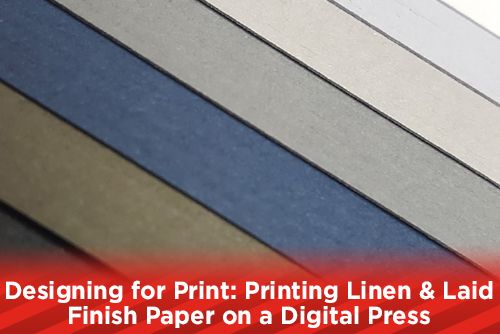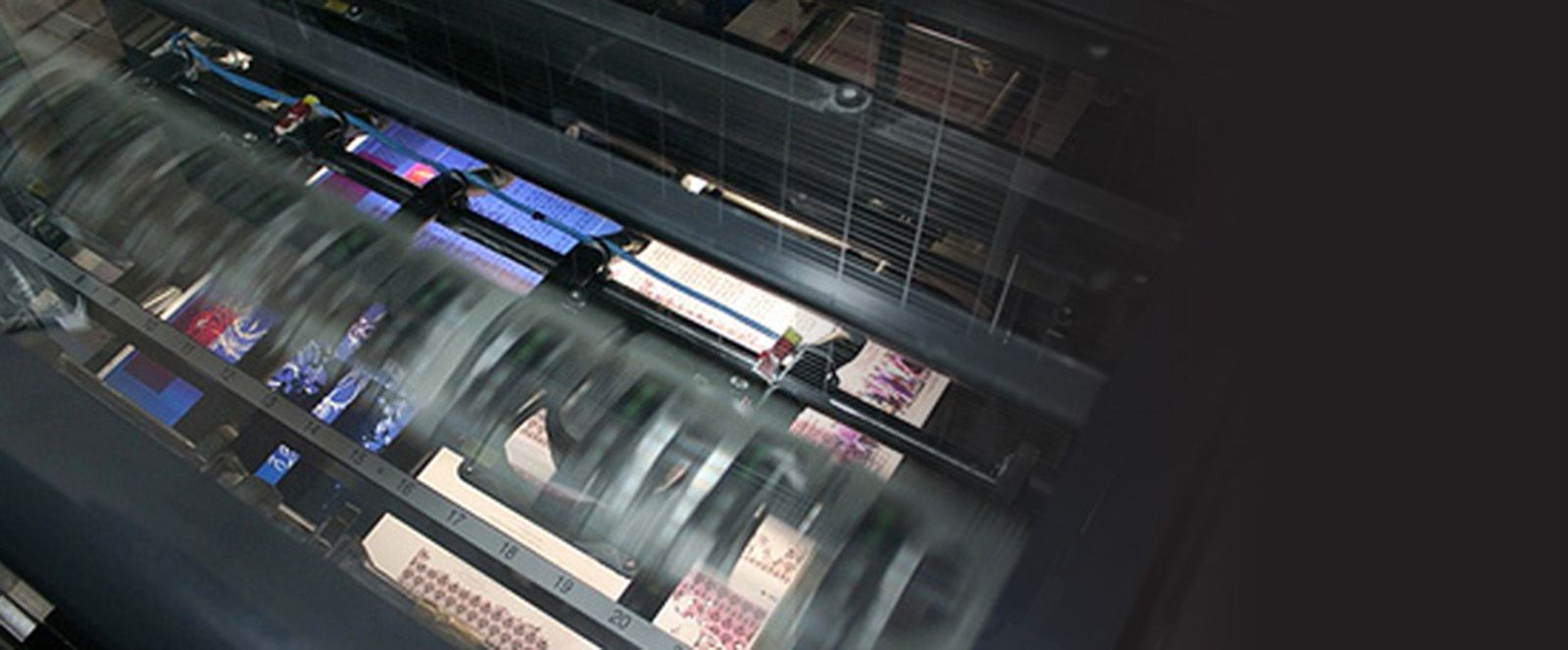
There are many different variables that go into a design that will be printed including color composition, font selection and page size. One very important attribute that gets overlooked often is paper selection. Paper can have a positive or negative affect on the whole design and choosing the wrong paper can turn your print media project into garbage.
Paper selection is an important part of graphic design. Knowing how certain papers react with ink can help you when you are designing your print media project. Most of the time your paper selection will be easy and consist of glossy or matte finishes, but how will textured papers work? And what if you wanted to print digitally? Today we will look at how laid and linen paper hold up when printed on a toner based digital press.
What Are Linen and Laid Finish Papers?
Both linen and laid are embossed papers that go through a different manufacturing process to create different textures. Linen papers have the look and feel of fabric linen with a raised crosshatch pattern and are made with fibers from the flax plant. Using these fibers in papermaking will create a stronger and crisper paper suitable for restaurant menus and stationery. The strength of linen paper is why the United States and other governments use a linen and cotton blend paper for currency printing.
Laid paper has the look and feel of papers made before the manufacturing process was invented. To create laid paper, the paper manufacturer will drain the paper stock on a wire mesh while applying a heavy roller, called a dandy roll, that has a laid mesh pattern on it. The pressure and pattern of the dandy roll will affect the fibers of the paper making some areas raised and some embossed. The look and texture of laid papers make it a good paper choice for business letterhead, business cards and restaurant menus.
The additional manufacturing process for linen and laid finish papers may limit your choice of colors, weights and quantities. Some paper suppliers might not even carry these papers, or they may keep a low quantity in stock and get the mill to generate more when the need arises. If your project requires you to print on linen or laid papers, please speak with a sales representative to make sure the product you need is available in weight, color and grain direction.
How Does Printing Digitally On Linen and Laid Finish Papers Affect My Design?
Toner based digital presses use an electric charge to adhere the toner to the paper where a traditional offset press will use ink, water and pressure to print. With traditional offset printing, you will get an ink dot that is pressed into the fibers of the paper allowing it to fuse better with the fibers. On a toner based digital press, lasers replicate the image to be printed onto a drum where electricity is used to charge the toner to adhere to the drum. Another charge is used to release the toner from the drum onto the paper, transferring the image to the paper. Next the paper passes through a heated fuser drum that melts the toner to the paper.
When linen and laid papers are printed on toner based digital presses, there is no pressure to squeeze the toner into the grooves of the paper. Because the toner is sitting on top of the ridges and not pressed into the valleys, your images may have a pitted or mottled look. If you have to have a linen or laid paper and print digitally, choose a digital linen or laid paper. These are manufactured with less texture in order to get away from the pitted or mottled look.
What Prints Best on Linen or Laid Finish Papers?
When designing for digital printing on linen or laid papers, try to avoid thin type and rules. Keep in mind that large solid colors will not look smooth and some dark shadows can end up looking washed out. Medium to heavy text in black looks good when printed digitally as well as busy images with a lot of color. Tans and lighter blue colors tend to look mottled when printed on digital presses in general. If you have the time, ask your print sales executive to provide you a sample print of your design. The good thing about digital printers is you have no plate cost and can see exactly how your file will print on the paper you choose.
We have seen some amazing work pass through our digital print department that was printed on linen or laid papers. Take the time to look at samples from the digital press and note which colors and font sizes do best. This will allow you to create a masterpiece that uses the texture of the paper to your advantage.
Would you like more helpful print related articles sent to your inbox? Subscribe to our mailing list and receive our bi-weekly article posts every Tuesday and Thursday.

